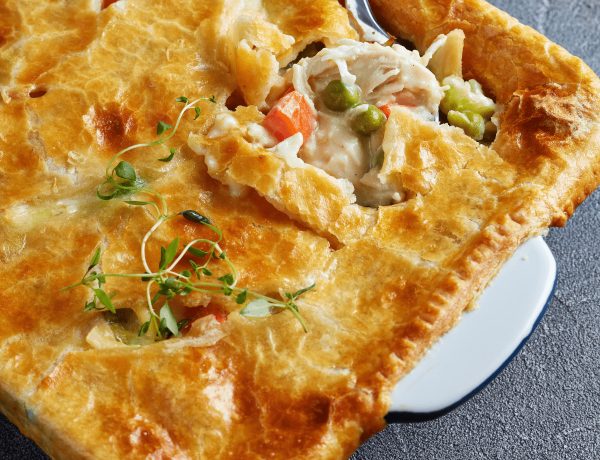We live in a health-conscious world, where the rules about what really makes up a balanced diet are constantly changing. While awareness and concern are important, it can become difficult to figure out what we should and shouldn’t eat.
In a recent survey we conducted*, nearly half of the 2,000 parents surveyed admitted that they find existing advice on child nutrition to be conflicting and confusing, with 38% citing food labels as the culprit behind mixed messages. With two thirds saying they don’t educate their children on the benefits of particular foods, it’s clear that miscommunication is causing our nutritional habits to suffer.
So what do nutritional labels really mean? And how do we integrate recommendations into a healthy diet?
The Traffic Light System

We’re all familiar with the green, yellow and red symbols on the front of food packaging, which represent the amount of fats, saturates, carbohydrates, sugars, proteins and salts contained within a food, based on the reference intake of an average adult.
In general, it is important to try to choose labels that feature mostly green icons, and minimise the orange and red choices to items that are rare treats.
Fats and Saturates

Fats serve an important role in a balanced diet as they are a rich source of energy. However, if we consume too much fat it can become stored as excess body fat and result in weight gain.
Different kinds of fats are made up from different types of fatty acids, some of which are good for us, but others can be harmful when consumed in excess. Saturated fats and trans fats should be avoided when possible, and are found in foods like fatty meats, full fat dairy products and cakes and biscuits.
In order to monitor saturated fat intake, pay attention to the colours on the traffic-light label: men shouldn’t have more than 30g of saturated fat in a day, and women should limit themselves to 20g or less. Children’s levels should be below this, and shouldn’t exceed 11% of overall daily energy intake.
Substitute saturated and trans fats for foods that contain unsaturated fats – oily fish, lean meat, avocadoes, nuts and seeds are healthy alternatives. Consider cooking with vegetable-based oils and swap to reduced-fat spreads instead of using butter. Rather than roasting or frying, choose to grill meat or steam vegetables instead.
Children need to consume calcium on a daily basis, to promote strong bone development, and opting for dairy products of the skimmed variety is another great way to reduce saturated fat intake while still promoting a healthy and balanced diet.
Carbohydrates

Carbohydrates are the main source of energy that our bodies draw from in order to perform daily functions. Especially for growing children, they promote strong muscle and brain development and are a key aspect of a nutritious diet.
Experts recommend that starchy foods such as bread, rice, couscous, potatoes, cereal, oats and grains should make up about one third of our daily diet.
The myth about carbs and weight gain has to do with the fact that they are often served with high-fat ingredients, such as butter or creamy sauces. In order to incorporate carbohydrates into a healthy regime, choose wholegrain and high-fibre options and serve with low-fat sides, such as vegetables and lean meats.
Sugars

Sugar is perhaps one of the most confusing aspects of the nutritional label. Similar to fats, it is a source of energy that occurs in foods in both good and bad ways.
The traffic light label shows the total amount of sugar that is contained in a product, but there are actually two kinds of sugar found in food: naturally occurring sugar and free sugars. Naturally occurring, as the name suggests, are sugars that are found naturally in foods such as fresh fruit and milk.
Free sugars refer to refined sweeteners that have been added artificially to food and are found excessively in soft drinks, pastries, and junk foods such as chocolate.
Experts recommend we avoid free sugars whenever possible and minimise our daily intake: adults shouldn’t consume more than 30g per day, children who are between 7 and 10 years old should have less than 24g, and 4 to 6 year olds should limit intake to a maximum of 19g.
Fruits and vegetables contain naturally occurring sugars and are important elements of a healthy, balanced diet – we’re all familiar with the ‘5 a day’ recommendation, which refers to the fact that we should consume five portions (80g each) of fruit or vegetables per day.
While fruit juices can often be an excellent option for fulfilling one of the five servings, keep in mind that juices often contain a higher amount of sugar than a typical piece of fruit does. Therefore, it’s recommended that we limit intake to 150g (about a glass) each day.
Protein and Salt

Protein is a vital component of a healthy diet as it gives us energy and aids growth and repair, whist providing essential vitamins and minerals. Meat, fish, eggs, yoghurt and beans are all great sources of protein. However, many protein-rich foods are also high in fat, and so it is important to choose options wisely and consume in moderation.
Salt is an important dietary component, but often we consume more than our recommended daily intake. While the salt we add to meals when cooking from scratch usually has a minimal impact, pre-made foods can contain a high concentration of sodium that we may not be aware of, which is why it is vital to check the nutritional labels.
Adults shouldn’t consume more than 6g of salt each day, which is the same as 2.4g of sodium and in its raw form would look like about a teaspoon-full. Children should have even less – those aged 7 to 10 should limit intake to 2g of sodium (5g of salt), and 4 to 6 year olds shouldn’t exceed 1.2g of sodium (3g of salt).
By educating ourselves about exactly what the nutritional labels are trying to tell us, and trying to use alternatives to avoid the unhealthy options lurking on the shelves, we can quickly embrace a healthier lifestyle. We’ve worked with lifestyle bloggers across the UK and compiled a fun range of tips and tricks to try out with your family, in our free eBook. The key to a nutritional diet is balance – don’t be afraid to indulge in the yellow and red options every once in a while, but on an everyday basis, green means go for it!
*Note: In February 2016 we surveyed 2,000 parents with children aged 1-16, living across the UK.




No Comments